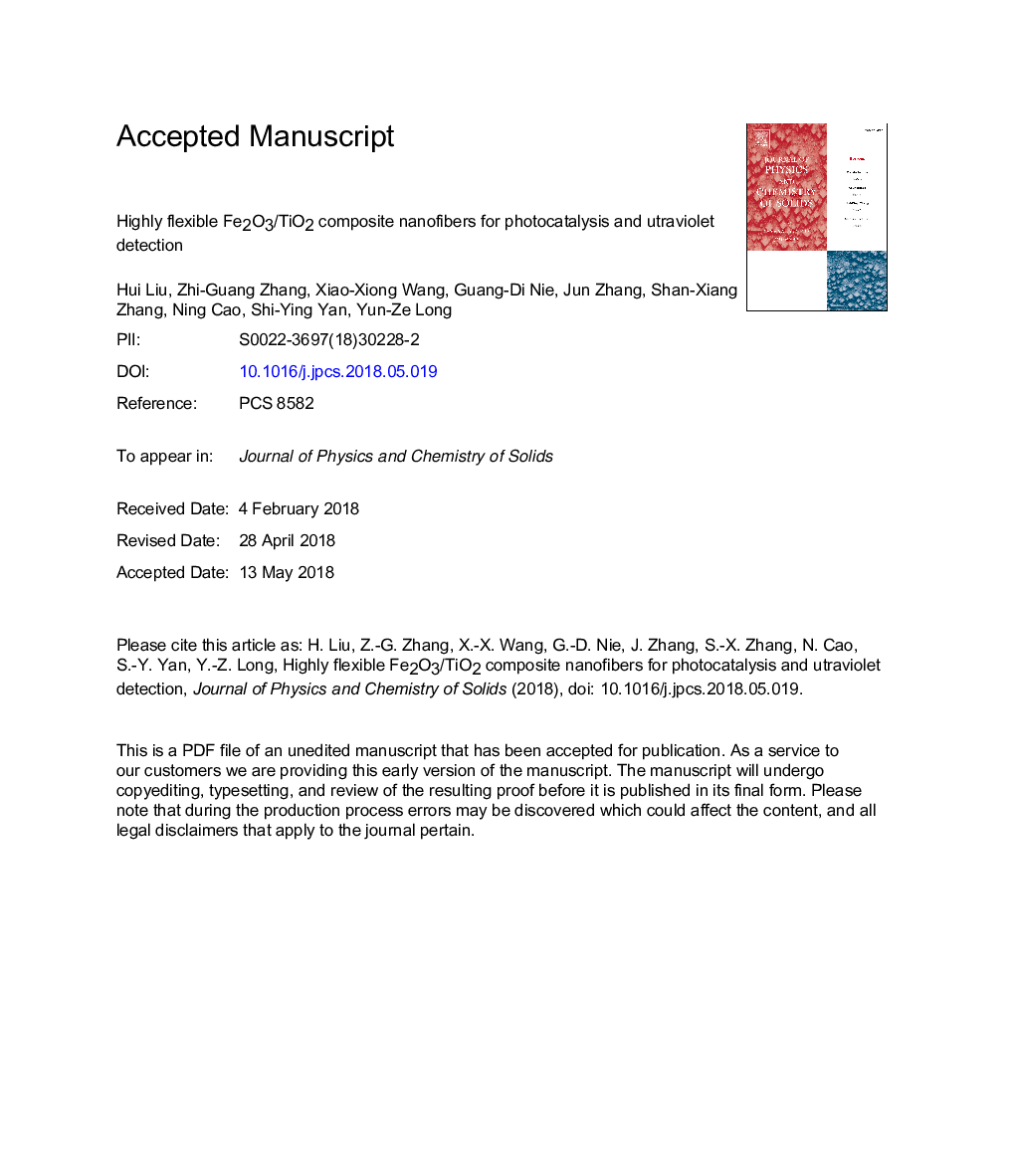| Article ID | Journal | Published Year | Pages | File Type |
|---|---|---|---|---|
| 7919960 | Journal of Physics and Chemistry of Solids | 2018 | 38 Pages |
Abstract
Highly flexible Fe2O3/TiO2 composite nanofibers were successfully synthesized via electrospinning followed by high-temperature calcination. The morphologies and structures of Fe2O3/TiO2 nanofibers were characterized by scanning electron microscopy (SEM), transmission electron microscopy (TEM), X-ray diffraction (XRD), and ultraviolet-visible (UV-Vis) spectroscopy, and their optical properties, photocatalysis and photodetection properties were also measured. The flexible nanofibers possess large specific surface area, and can be recycled by a magnet. Moreover, the absorption region has been extended from the UV region to the visible region, improving the performance of photocatalyst under visible light radiation. In addition, the formation of Fe2O3/TiO2 heterostructures suppresses the recombination of photogenerated electron-hole pairs, which also improves the photocatalyst behavior. Particularly, these nanofibers can also work as a sensitive UV detector, which offers in situ monitor method of such photocatalysis materials.
Related Topics
Physical Sciences and Engineering
Materials Science
Electronic, Optical and Magnetic Materials
Authors
Hui Liu, Zhi-Guang Zhang, Xiao-Xiong Wang, Guang-Di Nie, Jun Zhang, Shan-Xiang Zhang, Ning Cao, Shi-Ying Yan, Yun-Ze Long,
